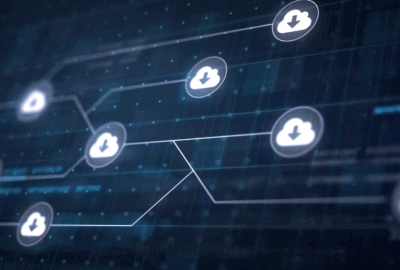 In recent years, the number of devices that have become part of the business ecosystem has been increasing. Either because to improve their performance, organizations have decided to invest in new technology, or because members of the company have begun to use various devices to simplify their work. Regardless of the reason, this phenomenon has increased the security challenges for companies; therefore the need has arisen to implement a new strategy aimed at ensuring endpoint security.
In recent years, the number of devices that have become part of the business ecosystem has been increasing. Either because to improve their performance, organizations have decided to invest in new technology, or because members of the company have begun to use various devices to simplify their work. Regardless of the reason, this phenomenon has increased the security challenges for companies; therefore the need has arisen to implement a new strategy aimed at ensuring endpoint security.
Read on and learn more about the importance of this security approach in helping you keep all your digital assets fully protected.
Why Endpoint Security?
 Currently, there are several factors that contribute to increase the vulnerability of IT systems in organizations. One of the most relevant is the hyper-mobility of technological devices. Too often, the company’s network security infrastructure is not able to protect laptops of the members of the organization. Therefore, they are vulnerable to sophisticated malware, contaminated external storage devices, or malicious content from websites.
Currently, there are several factors that contribute to increase the vulnerability of IT systems in organizations. One of the most relevant is the hyper-mobility of technological devices. Too often, the company’s network security infrastructure is not able to protect laptops of the members of the organization. Therefore, they are vulnerable to sophisticated malware, contaminated external storage devices, or malicious content from websites.
Because laptops can easily become contaminated and then be used to inject viruses and malware directly into the core of an organization’s IT system, new strategies are needed to protect digital environments from start to finish. It is in this context that endpoint security becomes indispensable.
When we talk about the endpoint, we mean all workstations in the enterprise, including laptops. Endpoint security, on the other hand, is an approach that proposes the application of solutions that monitor terminals (computers connected to the network) to detect suspicious activity. This guidance focuses on end-user devices: laptops, desktop PCs, and mobile devices, and aims to provide visibility and monitoring of suspicious activity, such as malware and cyber attacks, on the devices of users in organizations.
About Endpoint Security
This new approach to security consists of three crucial steps:
Identify even the unknown malware
 Cybercriminals are constantly looking for ways to create new, more complex and difficult to identify malware. So to avoid these situations; one protection technique that is often used is threat emulation or sandboxing. Suspicious files are intercepted as soon as they arrive and are inspected in an isolated area (the sandbox). A file is blocked as soon as it is considered suspicious. Sandboxing dramatically increases detection potential, but requires high computing power from a laptop or traditional PC, which will necessarily have an impact on the user experience.
Cybercriminals are constantly looking for ways to create new, more complex and difficult to identify malware. So to avoid these situations; one protection technique that is often used is threat emulation or sandboxing. Suspicious files are intercepted as soon as they arrive and are inspected in an isolated area (the sandbox). A file is blocked as soon as it is considered suspicious. Sandboxing dramatically increases detection potential, but requires high computing power from a laptop or traditional PC, which will necessarily have an impact on the user experience.
Smart Sandboxing
It is possible to eliminate many forms of contamination, on the one hand, by assuming that each file attached to an email; or each downloaded item may be contaminated; and on the other hand, by removing all potential threats before they reach the user. This is called threat extraction: documents are reconstructed using only secure elements; while all suspicious content (such as macros, inserted objects and files, and external links) is removed. The cleaned document is made available to the user after a few seconds so that he can use it immediately and the detection process does not interfere with his work.
The original document is sent to an intelligent sandbox environment, configured in a public or private cloud, where it can be analyzed in detail. If the document is free of contamination, the user will be able to download it safely. This intelligent approach minimizes the computing and processing power required by access equipment while providing optimal protection against threats to email attachments; downloads, or data copied from external storage devices.
Automated analysis
 Even when an attack is identified at an early stage, it is very important for IT teams to understand the nature of the attack; how it occurred and the damage it may have caused within the enterprise. However, the complexity of the ecosystem of access equipment within an organization makes this type of analysis of security incidents difficult. It is often difficult to determine the origin of an incident; not to mention the possibility of accurately describing the entire cycle followed by the attack and the damage caused.
Even when an attack is identified at an early stage, it is very important for IT teams to understand the nature of the attack; how it occurred and the damage it may have caused within the enterprise. However, the complexity of the ecosystem of access equipment within an organization makes this type of analysis of security incidents difficult. It is often difficult to determine the origin of an incident; not to mention the possibility of accurately describing the entire cycle followed by the attack and the damage caused.
In order to analyze these incidents, an access equipment security solution must be able to continuously monitor the attack data; this will allow the origin and scope of the incident to be revealed. The current methods of manual control are excessively long and laborious to be implemented during each incident. On the other hand, automated incident analysis, combined with detailed reports; can help IT teams understand the full cycle of attacks and accelerate the remediation of a contaminated network. Only by combining advanced threat prevention with the automation of attack-related data collection and analysis; enterprises can protect both users’ systems and their network cores without hindering operations.
Nessus scanner
If you are looking for an effective solution that enables your IT team to automate processes aimed at improving the security of your IT systems, we recommend you purchase the powerful Nessus. This world-renowned scanner will allow you to detect in real time any possible threat to your digital assets.
For more information about Nessus or any other security solution, contact us. In GB Advisors; we have a team of highly trained professionals to provide quality advice on ITSM and digital security issues. Trust us to help you choose the solution that best suits you.



